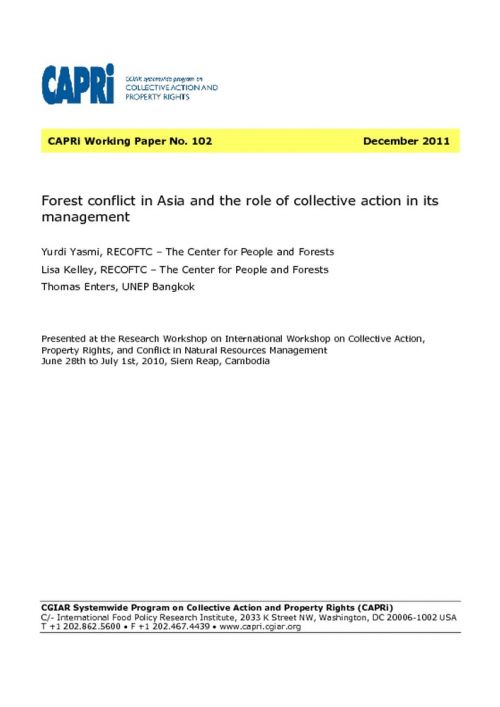APA 6th ed. Forest Conflict in Asia and the Role of Collective Action in its Management. (2011, December 1). Retrieved from https://voices4mekongforests.org/publications/0000185
MLA 8th ed. Forest Conflict in Asia and the Role of Collective Action in its Management. RECOFTC, 1 December 2011, https://voices4mekongforests.org/publications/0000185.
Chicago 17th ed. RECOFTC. 2011. "Forest Conflict in Asia and the Role of Collective Action in its Management." Published December 1, 2011. https://voices4mekongforests.org/publications/0000185.
Forest Conflict in Asia and the Role of Collective Action in its Management

Forest conflict in Asia is on the rise as various stakeholders have different views about and interests in the management of increasingly scarce resources. Unfortunately, in many instances, local communities and indigenous peoples suffer the most when such conflicts play out. Focusing on how rights (or a lack thereof) instigate conflict and how collective action plays a role in conflict management, this paper examines eight cases from six countries: Cambodia, China, Indonesia, Lao PDR, Thailand and Vietnam. Conflict was found to emerge in the context of the rapid economic development, where communities' deep connection to the forest and land is being cut by the influx of investors or government agencies. Land historically managed and used by local people becomes contested when investors are granted the rights to develop such land (for example, for oil palm plantations, agricultural production, and mining) or government agencies designate new protected areas. Findings illustrate that conflict can strengthen collective action and enhance the voices of the less powerful actors. However, it may also weaken collective action particularly when local institutions are inadequate. To reduce the incidence of future conflict, local and traditional rights need to be properly respected and strengthened legally. In addition, economic development policies need to have built-in social and environmental safeguards to minimize negative impacts at the local level. While conflict can either make or break collective action (and collective action can either escalate or assuage conflict) the need to strengthen local institutions seems to be a key priority to ensure positive conflict outcomes.

